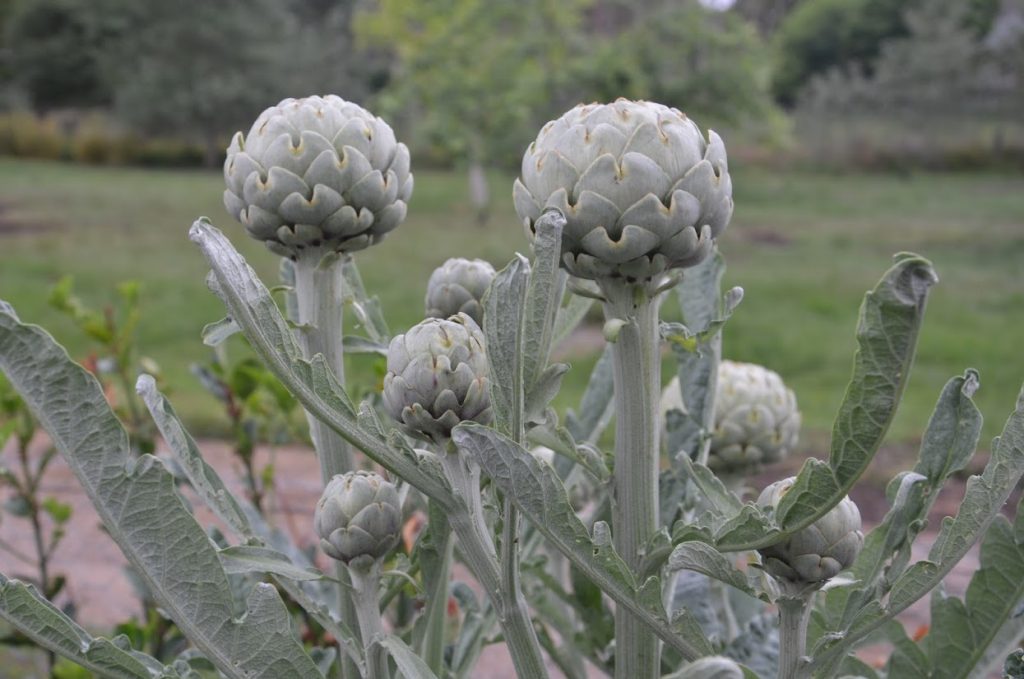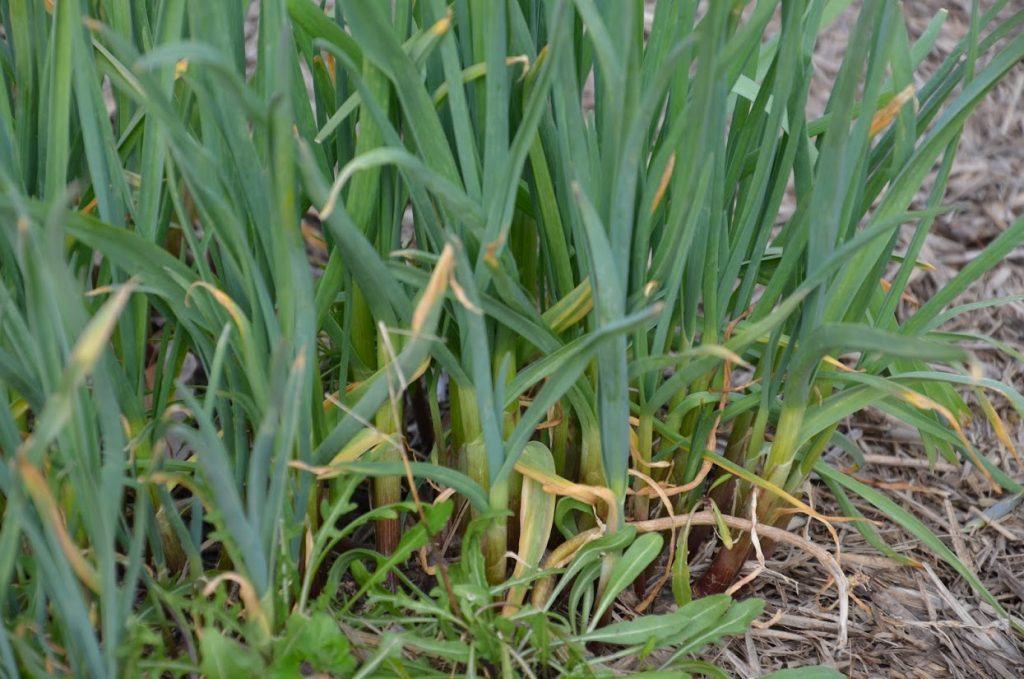
Perennial vegetables are a great way to supplement your annual vegetable production with very little effort. You plant them once, then get a harvest year after year with very little maintenance.
They are generally more drought tolerant and need less care than annual vegetables as they have large, well developed root systems which enables the plant to absorb water and nutrients from a greater area and depth of soil.
Here is a selection of perennial vegetables that are suitable for a temperate to cold climate.
Asparagus. Asparagus officinale
Because asparagus is a long-term crop, good initial soil preparation is important. Once established plants will continue to produce for many decades. The crowns should be planted in autumn in deep, friable, fertile well-drained soil in full sun. Dig a hole or trench a good 30 to 40 cm deep incorporate will rotted manure and compost. Asparagus does not like acidic soils so incorporate a little lime at the same time if you have an acidic soil. Plant crowns and water well with a seaweed based liquid fertiliser. Mulch. Allow plants to grow without harvesting for at least three years after initial planting. This produces a large healthy crown that will provide good think spears for many years.
Manage your Asparagus patch by cutting back the clumps in winter and apply an annual application of aged chook manure mixed with a little wood ash or lime, mulch heavily with Lucerne hay, provided the hay is weed free this will eliminate any weed potential for the following year and slowly feed you plants at the same time. Pick spears whilst young and succulent until they become thin then let them go into leaf which will then allow all energy to go back into the crown for next years crop. Several applications of a seaweed-based fertiliser in early spring when spears are emerging will extend your harvest.
It is a good idea to thin out the female plants (those with red berries) and encouraging the males, as they put more energy into the crown rather then into berry production giving better harvest.
For more on asparagus
Growing asparagus from seed- A cheaper alternative to buying expensive semi mature crowns.
Choko. Sechium edule
This perennial vegetable is related to melons and zucchini but is best grown over a fence or substantial trellis rather than on the ground. Chokos need a well-drained position with added compost and added animal manure ad some kind of structure to climb over. Obtain a whole fruit and place it in a warm light situation until it shoots. Half bury in a well cultivated planting hole and water well. Water and feed regularly and pick and eat the fruit while it is young and tender.
French Sorrel, Rumex scutantus
Sorrel is a slightly lemon flavoured green perennial herb used as a delightful tangy salad green and is also known as Buckler sorrel. It grows as a clump reaching 30-40cm with leaves 4-6cm across. It is a very hardy plant that will continue to flourish when the rest of your fresh garden greens are suffering either from the heat or the cold. Sorrel is best located in the full sun or with some afternoon shade and loves rich well-drained soil that is kept moist.
For more on growing and using sorrel see:
Growing and using Sorrel.
Ginger. Zingiber officinale
Ginger is a perennial herb native to Asia that grows 1 metre tall with underground rhizomes. It is native to monsoon forests and requires a well-drained soil, frost-free climate, and 1500 mm of rain annually or supplementary irrigation. It thrives best on loamy soils and likes the addition of well-rotted manure or compost. It does not like waterlogging. It does best in light shade, and it is a useful understorey plant in a “Layered food producing system”.
Obtain a good thick healthy looking rhizome place in a warm light situation until buds start to swell. Plant out in spring when the soil has warmed up and feed and water regularly. Rhizomes can be harvested at any stage once they have developed by digging down to the rhizomes and breaking off required amounts or the whole rhizomes can be lifted in autumn when the plant begins to go dormant. Save some rhizomes to plant next spring
Globe artichokes. Cynara scolymus
The leaves of globe artichokes are extremely handsome, with a lovely silver-grey appearance. They are in the thistle family and are a beautiful plant for the ornamental or vegetable garden. They are at their best in winter when the rest of the garden can be a bit drab.
They prefer a well-drained soil. Incorporate lots of well-aged low nutrient manure such as sheep or cow manure, add at little potash to encourage more flower bud production. It is the flower bud that you eat. Find a good recipe for preparing the buds it can be a bit fiddly but well worth it.
For more on growing globe artichokes see:
Growing Globe Artichokes
Jerusalem artichoke. Helianthus tuberosus
A Jerusalem artichoke is a white-fleshed root vegetable that is related to the sunflower. The plant is upright, tall-growing with bristly woody stems, green pointed leaves, and golden-yellow flowers like a small sunflower.
The edible tubers are elongated, knobby, white, red or purple skinned. Several tubers are clustered at the base of each stem. The tubers can be eaten raw or cooked and the flavour improves if they are left in the ground until frosted.
Best planted in the spring or early summer for good tuber production. Appreciates well drained and friable soils. A word of warning Jerusalem artichokes have the potential to be a bit weedy so make sure you dig up all the tubers as they will grow from the smallest most insignificant tuber and are compete against anything else planted near them.
Rhubarb. Rheum rhaponticum is a hardy and long-lived plant that will grow in almost any soil, but will thrive if it is grown in deep, well-drained soil. Poorly drained soil will kill the plant. The leaves are very toxic and should not be eaten or even fed to chickens, but composted. The stalks should be pulled away from the crown, rather than cut, make sure there is no remaining stem to rot the crown.
Feed your plants heavily with an annual application of well rooted chicken manure and good quality mulch such as Lucerne hay. Will benefit from watering in dry conditions. Flowering indicates that the plant is stressed so if this occurs remove flowers and increase watering and high nitrogen fertilising.
For more on growing rhubarbs see:
Dividing your Rhubarb Plants
Seven Year or Scarlet runner beans. Phaseolus coccineus
This perennial bean is an excellent nitrogen fixer for the soil. They will die back in winter but shoot again in spring. The plants can last up to seven years in the ground depending on the growing conditions. The beans should be picked when they are young and tender. This is great addition to a “Layered food producing system” as it will add nitrogen to the system, utilise vertical space and produce food.
Taro. Colocasia esculenta
Taro is a staple crop of the Pacific Islands. The tuber is a substitute for potato and can be used in a similar way, baked, boiled, or made into chips. Its very ornamental heart-shaped leaves can be used in the same away as spinach, but it needs to be cooked well to remove the oxalic acid.
The plant prefers moist, deep soil and it grows well in both full shade and full sun.
Be aware that Taro looks quite a lot like the Elephants Ear which is a common ornamental plant but is NOT edible.
Tamarillo Solanum betaceum
Tree Tomato is a fast-growing small tree that bears heavy crops of red or yellow succulent fruit. The fruit can be eaten fresh, or cooked or made into preserves.
Tamarillo’s are very quick growing and will crop in twelve months, reaching a height of 2-3 meters. They require well drained soil and protection from wind and frost.
Plant in early spring and feed and water regularly. Tamarillos are a short-lived perennial and will only crop well for 4 to 5 years. Semi hardwood cuttings can be taken in late spring to increase plant numbers or to replace older plants.
Warrigal Greens or Warrigal Spinach. Tetragonia tetragonioides
This is an Australian plant that also grows in New Zealand and in the coastal areas of Southeast Asia. It will continue growing for about two years, self-seeding on well-drained sites. It has a slightly bitter taste but is excellent in soups and salads.

Welsh Onions. Allium fistulosum
This is a non-bulb forming spring onion that multiplies by offsets near the base of the roots. It produces numerous bulbs, which cluster on a short rhizome. They will all self-seed in the garden. They are an extremely tough pant that needs very little care and has very few problems with pest and disease. Allow to establish for twelve months before using off shoots or trying to multiply your number.